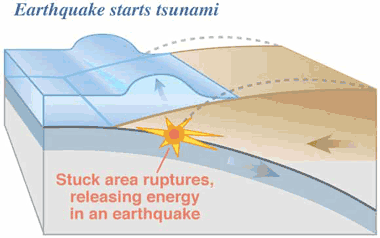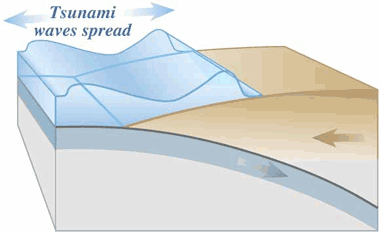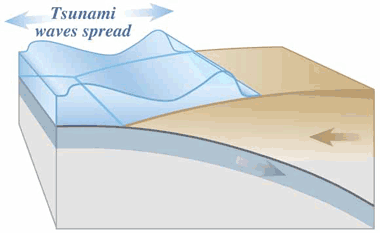How a Tsunami Occurs
A Tsunami is a series of waves, or "wave trains," usually triggered by an earthquake.
 | | |
Vertical Slice Through a Subduction Zone
One of the many tectonic plates that make up Earth's outer shell descends, or "subducts," under an adjacent plate. This kind of boundary between plates is called a "subduction zone." When the plates move suddenly in an area where they are usually stuck, an earthquake happens.
 | | |
A. Between Earthquakes
Stuck to the subducting plate, the overriding plate gets squeezed. Its leading edge is dragged down, while an area behind bulges upward. This movement goes on for decades or centuries, slowly building up stress.
 | | |
B. During an Earthquake
An earthquake along a subduction zone happens when the leading edge of the overriding plate breaks free and springs seaward, raising the sea floor and the water above it. This uplift starts a tsunami. Meanwhile, the bulge behind the leading edge collapses, thinning the plate and lowering coastal areas.
 | | |
C. Minutes Later
Part of the tsunami races toward nearby land, growing taller as it comes in to shore. Another part heads across the ocean toward distant shores.





